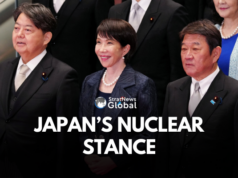NEW DELHI: Here’s a damper for those who believe a quick economic recovery is on the cards once the Coronavirus is done and dealt with. Economists say any recovery could well hinge on when the vaccine is made available and, as of now, that may take 12-18 months if not longer.
“It means the protectionist policies being implemented in so many countries will continue,” warns Rajat Kathuria, head of the Delhi-based economic policy think tank ICRIER. “When things go wrong, people become more inward-looking, less inclined to take risks. The fiscal stimulus we see in many countries is required to keep local businesses ticking over but it is the protectionist policies that need to be reviewed once the vaccine is ready.”
But few would care to bet on the world post the virus. What’s clear is that India’s GDP numbers are headed south. Currently, only GDP numbers for the December 2019 quarter are available showing 4.7 per cent growth, which reflected the previous quarter’s weak manufacturing, falling exports on the back of weak consumer demand and private investment. This was in the context of the global slowdown.
So is India in recession? Kathuria says that technically, a recession is defined as GDP decline over two successive quarters, so one will have to wait for the March 2020 quarter figures (which will be available in June), to establish a recession. But this is just semantics. The virus on top of the global slowdown indicates (as far as the Indian economy goes), the $3 trillion GDP falling to perhaps $2.75 trillion (where that leaves Narendra Modi’s $5 trillion economy is best left to imagination).
Celebrated economist Richard Baldwin put it in a nutshell when he pointed out that the Coronavirus “is as contagious economically as medically. It has hit the largest economies in the world; that means the world economy will have an enormous impact from this, in particular global trade will collapse rapidly, hopefully not for very long but rapidly.”
How can this situation be best managed? During the 2008 financial crisis, the G20 economies got together to formulate and implement a rescue plan. The current crisis is similar but the responses are not coordinated since the effort is to revive domestic economies. This ranges from fiscal stimulus to check bankruptcies to ensuring people have enough food in their bellies, and layoffs by industry are kept to the minimum. This has also required authorities to ensure medical equipment and treatment is easily available. Kathuria believes this is necessary but it must be followed by economic recovery and measures to ensure that recovery is sustainable. This calls for coordinated macroeconomic policies across the world, trade and investment flows must get back on track and current blocks on the export of sanitary and phytosanitary products need to be undone.
Here the role of the World Trade Organisation (WTO) is critical. It alone has the heft to free up global trade flows, ensure countries don’t get protectionist, for example, by refusing to allow the export of medical equipment or pharma products. There was even a problem with the export of APIs crucial to the pharma industry. But at this critical time, the WTO has been defanged, emasculated by the U.S. (in the same manner it is attacking the World Health Organisation). Its appellate body has been rendered ineffective with the U.S. refusing to nominate judges.
India may find the recovery process particularly difficult given the size of the country and the huge population, many living in densely packed clusters in urban areas. The infected numbers coming out of places like Bihar and Uttar Pradesh are low and therefore the suspicion the worst is yet to come. Then again enforcing “social distancing” norms is tough and not easy to sustain for long.
Nevertheless, this is an opportunity to reboot given the many missteps by India in the areas of climate change, infrastructure including medical infrastructure and public health, education and so on. Economists say India has followed a “flawed growth model” where people don’t have savings, no education and no access to healthcare. Government needs to work on this post-Corona.
More important, the government needs to leverage the opportunities provided by the worldwide backlash against China, which is seen as responsible for the Coronavirus and misled the world. Businesses and industry are looking for alternative destinations to invest. Japan has set apart a fund of over $2 billion to help its industry in China move elsewhere. This is an opportunity for India.
Kathuria notes that India has missed two such windows in the past, the first when China’s economic rise began (which Bangladesh and Vietnam took advantage of) and again during the U.S.-China trade war. India cannot afford to miss this opportunity.
“We have phenomenal advantages: cheap labour, a huge domestic market, India is the only alternative to China where industry can scale up,” says Kathuria, “this is our opportunity to reboot, re-size and upscale.”
Thirty eight years in journalism, widely travelled, history buff with a preference for Old Monk Rum. Current interest/focus spans China, Technology and Trade. Recent reads: Steven Colls Directorate S and Alexander Frater's Chasing the Monsoon. Netflix/Prime video junkie. Loves animal videos on Facebook. Reluctant tweeter.





